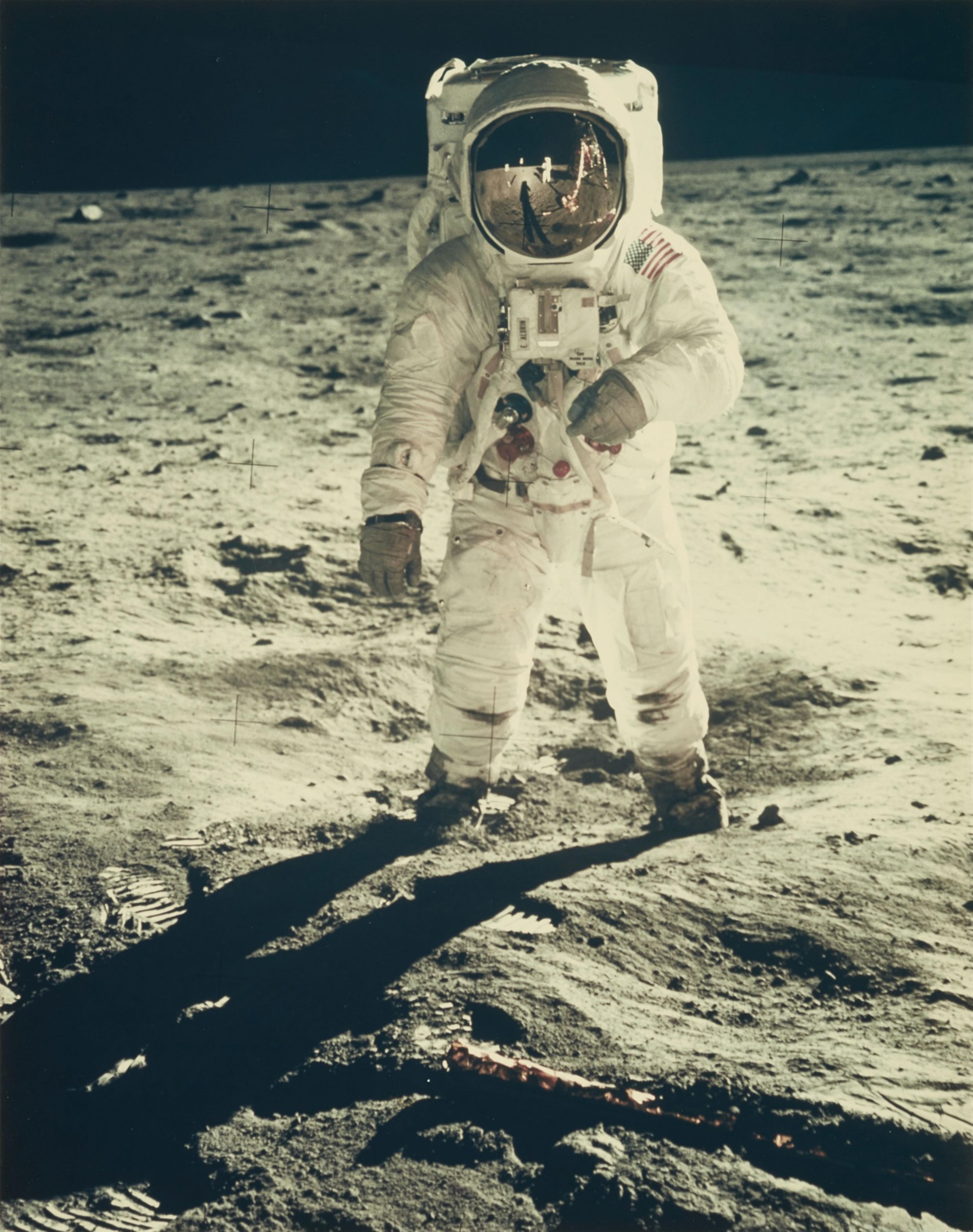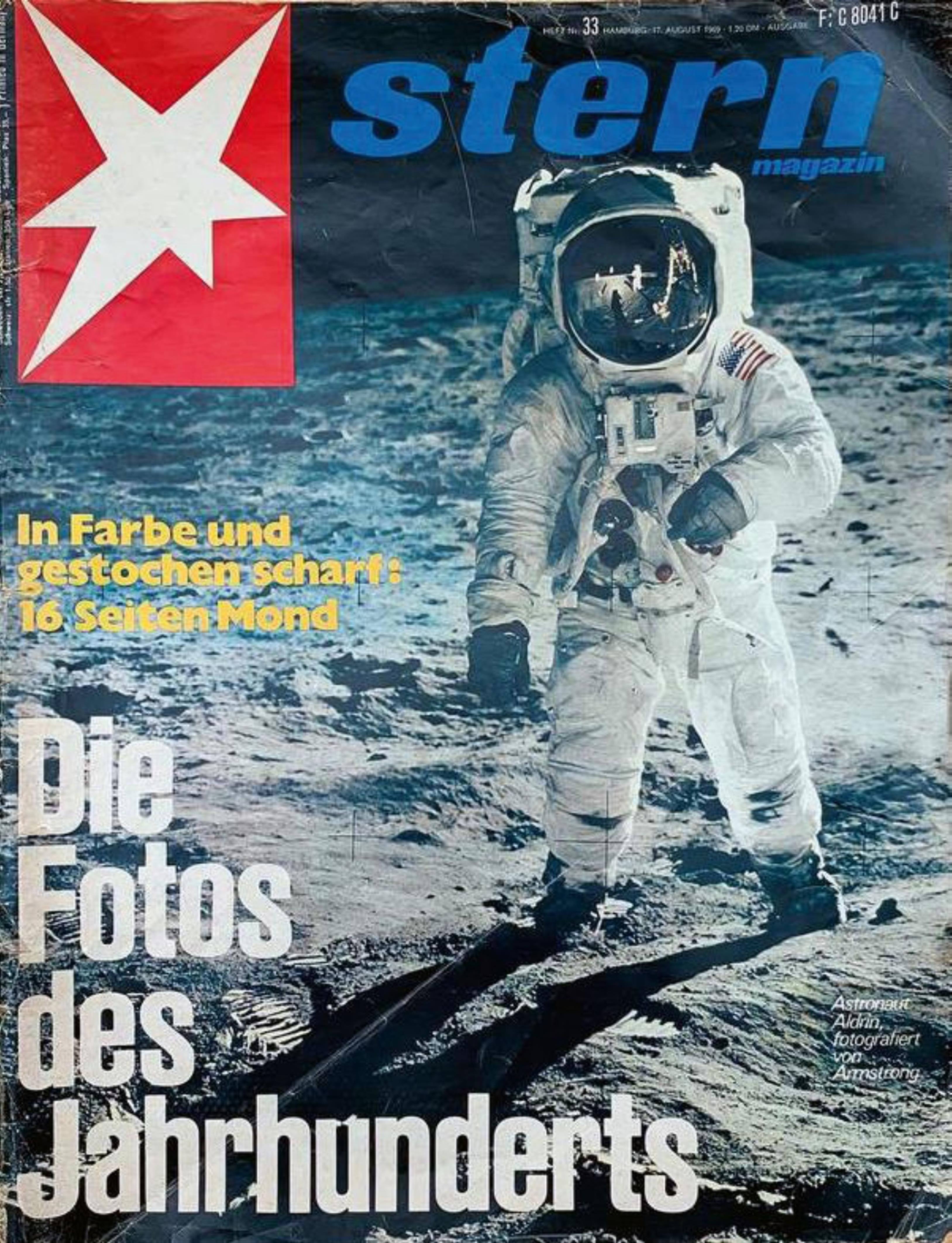NASA
Astronaut Edwin E. Aldrin walks on the Surface of the Moon, Apollo 11
1969
Vintage chromogenic print on Kodak paper. 48.3 x 48.1 cm (mat opening). Flush-mounted to original card and mounted under original mat.
'I believe that this nation should commit itself to achieving the goal, before this decade is out, of landing a man on the moon and returning him safely to the earth. No single space project in this period will be more impressive to mankind, or more important for the long-range exploration of space' Eight years after President John F. Kennedy issued this declaration to the American Congress, NASA made history for mankind and for science with the landing on the moon. The fact that the world public could participate was due to the spectacular film and photographs of the astronauts involved in the Apollo 11 mission.
Of the many images they brought back to Earth from their journey into space, there is hardly one that we associate more closely with the moon landing than the one astronaut Neil Armstrong made of his colleague „Buzz“ Aldrin during the first joint walk over the Earth's satellite. The photograph, which shows the astronaut in full outfit looking at the checklist attached to his wrist, while his visor shows the reflection of the photographer with his camera, the American flag, and the space shuttle „Eagle“, is one of the key images of the 20th century and today possesses an iconic character.
This is certainly also due to the fact that it is one of the most frequently published images of the NASA. Here, its visual power and the connected potential for publicity were quickly recognised, and it was reworked for publication shortly after the astronauts returned. In Armstrong's original photograph, his colleague has moved more out of the centre of the picture and his rucksack has been cut off at the top (cf. Mailer, loc.cit., p. 241) - a photographic inaccuracy that can probably be explained by the considerably more difficult shooting conditions in space. For reasons of better visual effect, the black sky was subsequently extended upwards. After editing it in this way, this shot graced the front pages of the international press, such as Life, Paris Match, National Geographic and Stern magazines as well as the covers of numerous book publications to this day. Furthermore, it found its way into contemporary art, for example into the œuvre of Robert Rauschenberg.
The present vintage print of the well-known motif convinces by its good preservation in the original mat, but above all by its large format. In contrast to the chromegenic prints of a much smaller format, usually 20.3 x 23.3 cm, which were printed in larger numbers, prints of this size are very rare. They were reserved for NASA's senior scientists, state guests, Hasselblad executives, or, as in our case, Kodak managers from whom NASA purchased its photographic material.




